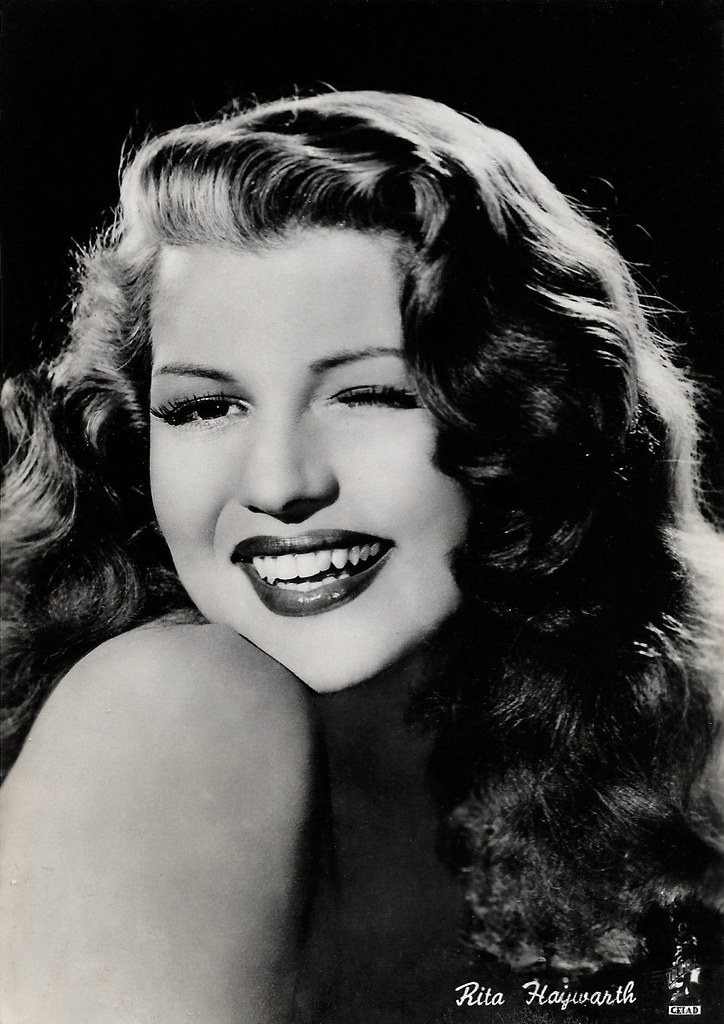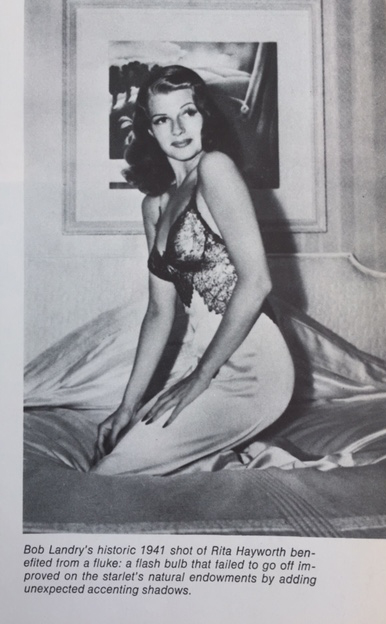She was a child night club dancer, an actress, a mega movie star, and a princess. She was Brooklyn-born Margarita Carmen Cansino, known to millions of admirers the world over as Rita Hayworth, Hollywood’s Golden Era “Love Goddess.” The actress had earned the unique moniker after the statuesque beauty starred in the 1946 film noir masterpiece Gilda.

Budd Burton Moss was Rita Hayworth’s longtime agent and managed her career up to her passing in 1987. I interviewed Moss for ALIVE Magazine in September 2014 in a piece entitled, “Starmaker: Hollywood Talent Agent,” when he published his memoir.
Moss called me recently about an upcoming documentary on Rita Hayworth to be filmed by the German Bremen-based Bremedia Produktion GmbH, who have formulated a story-line treatment of their documentary to be aired initially in Germany and France. Henning Van Lil and Katja Runge will be commencing work on the German-produced documentary for a French-German network to be aired throughout Europe in mid-2020 titled, Rita Hayworth—Glamour and Drama of a Hollywood Legend.

During a recent phone interview, Henning told me production will commence in October and will be filmed at relevant locations with interviewees in New York and Los Angeles. Burton Moss, their U.S.A. producer, will be suggesting locations and arranging interviews of those who were connected to the star.
The producers’ treatment spells out how they plan to film the documentary by exploring her domineering father’s influence, his overpowering control, and how it played into her future with five failed marriages and being manipulation by Hollywood Studios during her 37-year career.
Henning Van Lil, a twelve-year documentarian, will focus on Hayworth’s backstory, her tireless tenacity, and the intricacies of one of the 20th Century’s most iconic movie stars; beautiful, vulnerable, courageous and exploited.
Burton Moss and Foster Hirsch will hopefully be arranging interviews with Robert Wagner, Angie Dickinson, Constance Towers, Diane Baker, and the daughters of Gary Cooper and Orson Welles.
Rita Hayworth’s life was exciting, if not downright tumultuous. Her Seville-born father, Eduardo Cansino, was a flamenco dancer, and Irish-American mother, Volga Hayworth, danced in New York. Margarita, born in 1918, performed on the stage at the tender age of four, and by twelve was her father’s regular dance partner. He defied child labor laws by taking his pre-teenage daughter to Tijuana, Mexico, where they did as many as twenty shows a week in nightclubs.

At the age of eighteen, Margarita married an older man to break away from her demanding father. Realizing her star power potential, her husband introduced her to the head of Columbia Pictures. The Studio neutralized her “Latin” look, receded her hairline, dyed her dark hair red, and changed her name to Rita Hayworth. They put her through grueling speech lessons and an exercise regimen that helped the shy dancer evolve into the studio-molded femme fatale and sensual sex symbol that never knew a real childhood.
After several B-movies, Hayworth did not yet have a breakthrough film part but the perfect role and an iconic photoshoot was on the near horizon. Bob Landry took a photo of Rita in a silky negligee for the August 1941 Issue of LIFE Magazine. His camera malfunctioned, the flash failed thus the image had a shadowy chiaroscuro quality resulting in the pin-up photo being one of the favorites of wartime GIs.

The LIFE Magazine photo caught the discerning eye of genius filmmaker-director Orson Welles who was internationally celebrated for his visionary Citizen Kane masterpiece film. Welles set out to marry Hayworth in 1943 and the following year Rebecca was born.
Innovative Welles re-invented his wife for The Lady from Shanghai part, and with scores of media onlookers, had the hairdresser cut her trademark red hair short and dyed it blond. A brand new Rita emerged, shedding the sensual-dancer-voluptuous-siren persona that had made her into a Hollywood icon.
Hayworth had already been featured in about half a dozen “ethnic” roles in the early years then came the breakout 1941 FOX Studio bullfighting film, Blood and Sand, with Tyrone Power and Anthony Quinn. By 1942 she was dancing with Fred Astaire in You Were Never Lovelier, followed by Cover Girl in 1944.
In 1944 the sensational star was named the top box office movie star in the world. Many years later the American Film Institute named Rita Hayworth as one of the top 25 female screen legends of all time and listed the cinematic screen icon among AFI’s 100 Years, 100 Stars.
Rita starred as “Gilda” in the film noir movie as a nightclub singer who removes long satin gloves with such sensual finesse that it set her on a trajectory to unequaled stardom. The post-war film was an international sensation and a short time later, she married a prince.
It was during the 1948 Cannes Film Festival when Rita Hayworth caught the eye of dashing Prince Aly Khan who owned a lavish chateau on the Riviera. Several times the bon vivant had watched “Gilda” in his private screening room and set out to pursue the star. The playboy prince gambled at chic casinos, drove fast cars, owned Irish race horses, had married socialites, and targeted the voluptuous movie star who had just divorced Orson Welles.
Being considered one of the leading movie stars in the world, she had also been pursued by Ari Onassis and the Shah of Iran. But the suave Prince Aly Khan, whose own father was literally worth his weight in gold, charmed her with diamonds, pearls and lazy romantic days at his terraced chateau.
After a whirlwind romance and a speedy divorce from his wife, the charming prince married Rita Hayworth and she became a bonafide American princess. Their daughter, Princess Yasmin Aga Khan, was born in 1949 in Lausanne, Switzerland.
Hayworth lived in Europe with her husband and two daughters but the fairy-tale marriage faded into twilight and ended after four years followed by a bitter child custody battle. Soon after returning to Los Angeles she married crooner Dick Haymes who was severely in debt and whom she divorced after he cleaned out her bank account. One more marriage and a career total of 61 films followed.
Budd Burton Moss’ uncle was Sam Zimbalist, his mother’s brother, and his father was film editor at Fox which later became 20th Century Fox. Zimbalist produced Ben Hur which won 11 Oscars in 1959 and he was the first person to earn an Academy Award posthumously, having died in 1958 during filming in Rome.
Moss first saw Blood and Sand as a youth, and years later at a Fox Studios commissary, he finally got close to the silver screen idol who was lunching with studio boss Darryl F. Zanuck. A few years later Budd Burton Moss was Rita Hayworth’s agent/manager, confidant, and friend up to her illness. In 1976 he accompanied Hayworth to London on a TWA flight and just before landing she became agitated, demanding, and short-tempered for no apparent reason.
In 1980 it was revealed that her mood changes and agitation was caused by a then-unknown illness, later diagnosed as Alzheimer’s Disease. In 1987 Rita Hayworth passed away.
Today, Rita Hayworth’s daughter, Princess Yasmin Aga Khan, dedicates much of her time and effort to raising both awareness and funds to help find a cure for the mind-stealing disease of Alzeimer’s that touches the lives of about 50 million people worldwide. Princess Yasmin is president of Alzheimer Disease International and Alzheimer’s Association as well as serving on several boards.
Leave a Reply